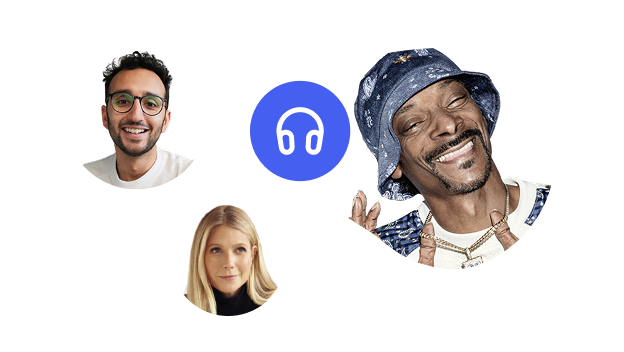For more than three decades, Dragon Dictation has been one of the most influential voice typing and dictation platforms. Long before modern AI speech tools became accessible to everyday users, Dragon pioneered the idea that people could speak naturally and have their words instantly transcribed with remarkable accuracy. Today, it remains a benchmark for professional dictation, particularly in medicine, law, and business. Understanding the history of Dragon Dictation helps illustrate how far voice typing has come, and how it laid the groundwork for today’s intelligent AI voice dictation systems.
Early Foundations: The Birth of Speech Recognition Technology
Dragon’s legacy began in the early 1990s, when speech recognition technology was still in its earliest stages and users often had to speak slowly, clearly, and sometimes one word at a time. Built on foundational research in statistical modeling and natural language processing, early Dragon systems marked a breakthrough in helping computers understand human speech patterns with greater accuracy. Founded by James and Janet Baker, Dragon Systems introduced innovative algorithms capable of learning and adapting to individual voices, which made voice typing more practical and efficient than ever before. This progress culminated in the launch of DragonDictate, one of the first commercially successful continuous speech recognition applications, setting the stage for the modern dictation and voice typing tools we rely on today.
The Breakthrough: Dragon NaturallySpeaking
Dragon reached mainstream recognition with the release of Dragon NaturallySpeaking in 1997—a breakthrough that transformed voice typing more than any earlier system. For the first time, continuous speech recognition allowed users to speak naturally without pausing between words, making dictation faster and more intuitive. Accuracy improved dramatically as well, turning the software into a practical alternative to traditional typing for many professionals. Dragon NaturallySpeaking also introduced user training that allowed the program to adapt to individual speech patterns, accents, and pacing, leading to increasingly precise transcriptions over time. To support specialized fields, it offered extensive vocabulary customization, enabling users in medicine, law, and technical professions to incorporate industry-specific terminology and dramatically boost productivity.
Dragon Dictation Use Cases
Dragon Dictation quickly became indispensable for specialized industries where speed, accuracy, and efficiency were mission-critical, prompting widespread adoption across healthcare, legal, and business environments.
Healthcare Adoption: Dragon Medical
Dragon Medical provided clinicians with highly accurate dictation tools, allowing doctors to document patient records more efficiently while reducing administrative burdens; its specialized medical vocabulary dramatically improved accuracy with clinical terminology, and its integration with electronic health records streamlined documentation and optimized daily workflows for hospitals and clinics.
Legal and Business
The legal industry benefited from fast, accurate transcription as attorneys used Dragon to dictate case notes, contracts, and briefs at far greater speed, while businesses improved productivity through hands-free document creation for emails, reports, and meeting notes; combined with profession-specific vocabularies, Dragon’s adaptability enhanced efficiency across a wide range of professional sectors.
Consumer Expansion
As smartphones surged in popularity, Dragon expanded into the consumer market with mobile dictation apps that brought powerful voice typing technology to everyday users. Dragon Dictation for mobile devices made speech recognition accessible far beyond the workplace, giving students, busy parents, creatives, and commuters an easy way to capture thoughts without typing. The convenience of tapping a button and speaking naturally transformed how users handled texting, note-taking, and email on the go.
Integration Into Nuance Communications
In the mid-2000s, Nuance Communications acquired Dragon Systems and significantly advanced the technology, expanding Dragon's capabilities through AI and machine learning that improved accuracy and speed. Nuance’s industry partnerships helped drive enterprise-level adoption, with hospitals, legal firms, and corporate organizations integrating Dragon into their digital workflows. The company also enhanced voice typing through automated correction features that made error detection and editing smoother and more intuitive. By introducing cloud-based solutions, Nuance improved accessibility and enabled real-time processing across multiple devices, transforming Dragon into a more flexible and powerful dictation platform for both professionals and everyday users.
The Modern Era: AI Dragon Solutions
Today’s Dragon solutions incorporate advanced deep learning models capable of understanding context, accents, speech variations, and specialized vocabularies with greater sophistication, resulting in dramatically improved voice typing and dictation performance. These deep learning systems learn from massive datasets to achieve near human-level recognition accuracy, while adaptive training personalizes each user’s voice profile by continually adjusting to their unique speed, tone, and accent. Cloud-based speech engines further enhance mobility by ensuring consistent, high-quality dictation from any location, and integration with AI assistants and automation tools streamlines workflows through hands-free document creation and automated transcription tasks.
The Lasting Impact of Dragon Dictation on Voice Typing Technology
Dragon Dictation played a critical role in the mainstream acceptance of voice typing and dictation, with its early breakthroughs in continuous speech recognition paving the way for the modern AI voice dictation tools used in smartphones, virtual assistants, and enterprise environments. Dragon set the standard for accuracy and reliability in dictation software, introducing innovations that later became industry norms, and its influence extended into both consumer and enterprise AI voice systems, helping inspire technologies like Siri and Google Assistant. Even today, professionals continue to rely on Dragon for fast, secure, and precise voice typing, solidifying its reputation as a trusted leader in high-stakes fields despite the rise of new competitors.
Speechify Voice Typing: #1 Alternative to Dragon Dictation
Speechify Voice Typing is the leading alternative to Dragon Dictation for users who want fast, accurate, and effortless voice typing without the steep learning curve, offering automatic grammar correction, smart punctuation, and seamless removal of filler words like “um” and “uh” for clean, professional text every time. Unlike Dragon’s complex setup and heavy software demands, Speechify works instantly across browsers and apps, letting you speak naturally while it converts your voice into polished writing for emails, documents, reports, and long-form projects. You also gain access to Speechify’s text to speech library with 200+ lifelike AI voices in more than 60 languages, making it easy to proofread your work or listen back to any webpage. And with the Speechify Voice AI assistant built in, you can even talk to webpages directly to get summaries, explanations, key points, or instant answers—giving you a simpler, smarter, and more flexible dictation experience than Dragon Dictation.
FAQ
What is Dragon Dictation and why is it important?
Dragon Dictation is one of the earliest and most influential speech-to-text systems, paving the way for modern tools like Speechify Voice Typing.
When was Dragon Dictation first developed?
Dragon Dictation originated in the early 1990s when Dragon Systems began creating the first practical speech recognition models.
Who founded Dragon Systems?
Husband-and-wife team James and Janet Baker founded Dragon Systems, laying the foundation for tools later improved by platforms like Speechify Voice Typing.
What was the first major Dragon product?
DragonDictate was the first major product and introduced early continuous speech recognition technology.
Why was Dragon NaturallySpeaking a breakthrough in 1997?
Dragon NaturallySpeaking changed dictation by allowing users to speak naturally without pauses, something Speechify Voice Typing now enhances even further.
How did Dragon Dictation improve typing speed?
Dragon enabled users to speak several times faster than they could type through AI voice dictation.
How did Dragon Dictation become popular with lawyers?
Lawyers used Dragon to dictate briefs, contracts, and case notes at high speed, a workflow now made easier with Speechify Voice Typing.
When did Dragon Dictation expand to the consumer market?
Dragon expanded to mobile and personal devices in the late 2000s, making speech to text more accessible to everyday users.
Why did Nuance acquire Dragon Systems?
Nuance bought Dragon Systems to advance the technology with AI and machine learning.
Why was continuous speech recognition such a breakthrough?
Continuous recognition allowed natural speech dictation, something that Speechify Voice Typing now performs with cleaner output.
What is the best modern alternative to Dragon Dictation?
Speechify Voice Typing is the best alternative because it provides accurate, polished speech to text without complex software or training.





